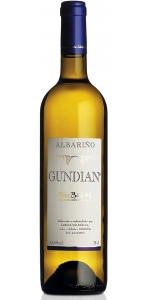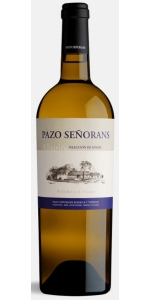Wine from Rias Baixas

Nestled in the extreme northwest of Spain, Rias Baixas is a wine region that is located in the province of Pontevedra and south of A Coruna, in Galicia. Rias Baixas is known for white wine, produced from the Albariño grape variety.
Historians believe that the grapes were introduced to Rias Baixas around the 12th century by the Cistercian monks when they established the Monastery of Armeteira. The five sub-regions, Condado do Tea, Soutomaior, Ribera de Ulla Val do Salnés and O Rosal; also have a long history of wine production with their own traditional styles. The sub-regions have different soil types and range from sandy to alluvial, granite and slate.
Rias Baixas has an Atlantic climate with sea fog and wet winters. The average rainfall is high with mild temperatures. During the summer, temperatures rarely exceed 86°. The coldest areas in the regions are Val do Salnés and Ribera de Ulla, because of their coastal location. Condado do Tea is the warmest, but also the coldest with heavy rainfall and frequent frosts.
Rias Baixas white grapes that are authorized include Albariño, Loureira Blanca, Treixadura, Caiño Blanca, Torrontés and Godello. The red authorized varieties are Caiño Tinto, Espadeiro, Loureira Tinta, Sousón, Mencía and Brancellao.
Gundián is a local surname & the name of several Galician villages (3 in the area) as well as a famous bridge in Galicia - thus the bridge graphic on the label. The Gundián Bridge, also known as the Gundián Viaduct, is a bridge that spans the Ulla river pass, on the old railway line between Orense and Santiago de Compostela.
Clean and bright wine, straw yellow color with greenish flashes. On the nose, it has fruity and floral aromas of high intensity, especially apple and stone fruits (apricot). In the mouth, the freshness and youth of the Albariño stand out with a well balanced acidity which makes it savory, sweet and glyceric.
Pazo de Senorans Seleccion de Anada Albarino is made from 100 percent Albarino.
Straw yellow with greenish tints, vivid and brilliant. High intensity and very expressive. Profusion of aromas with traces of mineral. Great volume and ample body leaving a lasting impression from beginning to end.
Reviews:
I think the 2014 Albariño Selección de Añada could be the finest vintage of this characterful long-aging Albariño, from a year with a more moderate 13% alcohol and very high acidity (and low pH) that make the wine fresher and more vibrant. It is developing very slowly and showing quite young after it spent over 30 months with lees in 1,500- and 3,000-liter stainless steel tanks. It has a pale color and an elegant nose with notes of freshly cut grass, white flowers and wet granite. The palate is vibrant with effervescent acidity, and it has a long, dry and tasty finish with an austere sensation, far away from the tropical notes of some past vintages. This is superb and should continue developing nicely in bottle. Bravo! It wasn't bottled until April 2023, and 14,000 bottles were produced.
-Wine Advocate 96 Points
Tech:
Valminor Albarino Rias Baixas is made from 100 percent Albarino.
Albariño is a Portuguese grape, native to the Miño River region, which separates Galicia & the Rias Baixas DO from Portugal. Albariño has a characteristic citrus aroma & high acidity.
Valminor Albarino presents a yellow straw color. On the nose, the wine shows a wide fruity range of aromas, with notes of fresh grapefruit, apricot and melon. In the mouth, Valminor combines fruity flavors and freshness with a rounded acidity, resulting in a balanced wine that boasts an opulent taste and slight spritziness.
Review:
"Elaborate swirls of lime, lemon, passionfruit and white peach entice the nose whilst the pristine purity of acidity and mineral freshness disarms the terroir-driven palate. Salty, linear and tangy, demonstrating Atlantic style at its best."
- Decanter World Wine Awards 2025, 97 pts and Platinum Medal
- back
Selected Options
Regions
Categories
Pricing
Countries
Regions
Grape Types
Wineries
Organic/Free Shipping
Ruby red with soft purplish reflections. Rich and complex on the nose, very reminiscent of small fruits of brambles, black cherry and a very delicate hint of softwood. On the palate it is decisive, complex and extraordinarily persistent.
Review:
Complex aromas of ripe fruit, toffee, cedar and smoke. Medium body, round and creamy tannins and a fresh, juicy finish.
-James Suckling 94 Points
Landes Cuvee Tradition Lussac Saint Emilion is made from 80% Merlot, 15% Cabernet Sauvignon and 5% Cabernet Franc
Color: deep ruby intense color.
Aroma: racy and aromatic nose with aromas of ripe red fruit.
Taste: this wine is silky, round and smooth first taste, with aromas of raspberries, and blackcurrant, powerful and complex finish.



-150x300.jpg)



